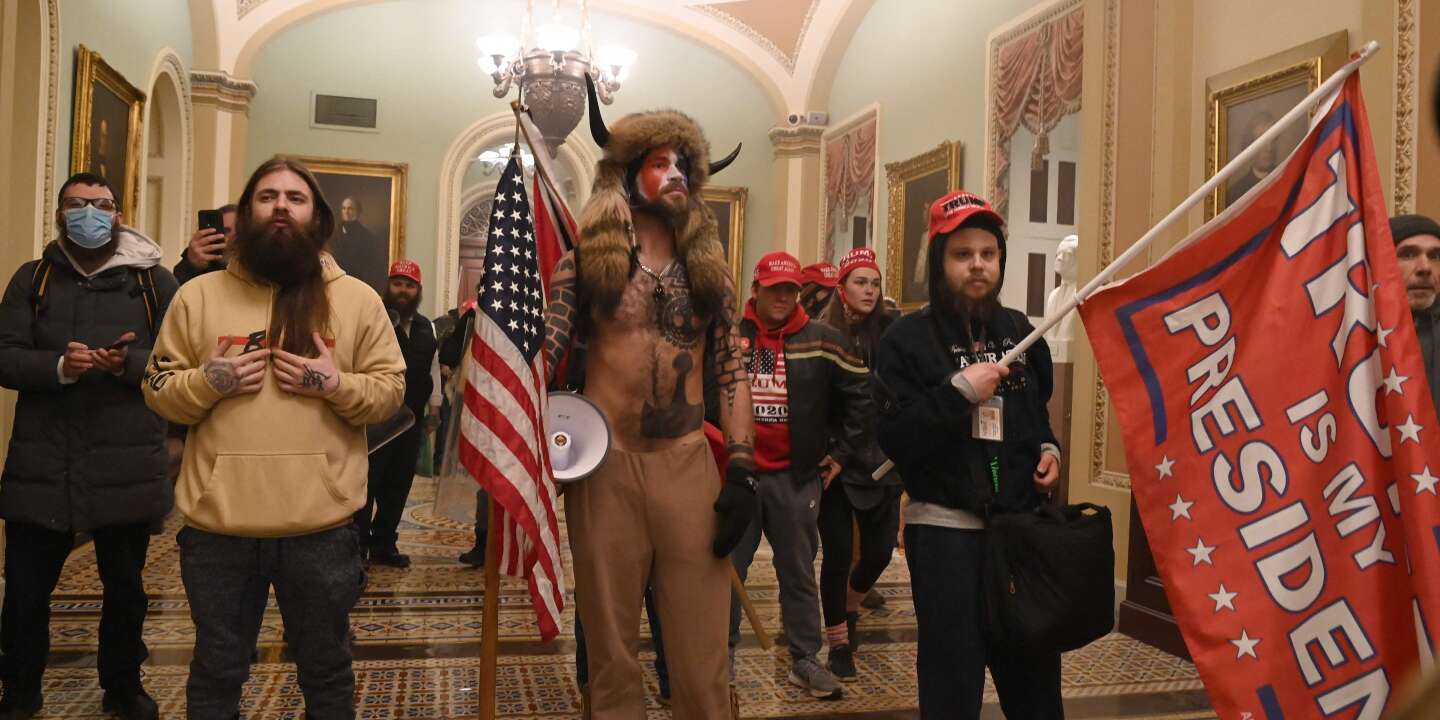
Professor of American history at the University of Chicago, Kathleen Belew is one of the best specialists in far-right movements. She is notably the author of Bring the War Home : The White Power Movement and Paramilitary America (“Bringing the War Home: The ‘White Power’ Movement and Paramilitary America,” Harvard University Press, 2018, untranslated), which dissects the characteristics of « white power », heterogeneous current with a central role in this promotion of armed violence.
What do you remember from the assault on Capitol Hill on January 6, 2021, by supporters of Donald Trump, aimed at preventing the certification of the results of the presidential election?
This day can be seen as the meeting point between three organized political extremist currents. The first constitutes the base of supporters of Donald Trump, some of whom were there to express their support. The second is QAnon, a multifaceted movement taking up a conspiracy theory made up of old ideas, such as the imaginary cabal fomented by the elites against women and children. What is new with QAnon is the speed and intensity of its radicalization. The third is activism white power. Even if it represents a small fraction of the people involved in the January 6 insurrection, this current is very organized, with training camps, infrastructures, weapons… It is not new, it is even well documented. , but for a long time, the authorities did not know how to deal with it. The meeting of these groups led to the transformation of a moment of radical intensity into something more lasting.
Could you define the white power movement, its organization and its methods?
It was formed after the Vietnam War [1955-1975] around the idea of betrayal and failure of the federal government, by bringing together groups that had clashed in the past: neo-Nazis, members of the Ku Klux Klan (KKK), radical tax resistance, feverish followers of the Christian identity… Then, in the 1980s, the movement spread to certain skinheads, to the radical right and to large parts of the private militias. It was a very diverse social movement, on the fringes, present in every American region with strong foundations in rural and peri-urban areas.
White power is organized in concentric circles, capable of influencing the traditional political current. Ideas start from the core and enter the following circles. This core is made up of around 25,000 hardened activists, according to an estimate dating from the 1990s. These people live for and through the movement, attend white power churches, sleep with other activists when they travel. Then, outside, there are between 150,000 and 175,000 individuals who take part in rallies and marches, make donations, subscribe to radical specialist journals. A third circle brings together around 450,000 people, who do not subscribe to these publications but read them regularly, who do not attend meetings but often speak with like-minded people.
You have 75.95% of this article left to read. The rest is for subscribers only.






